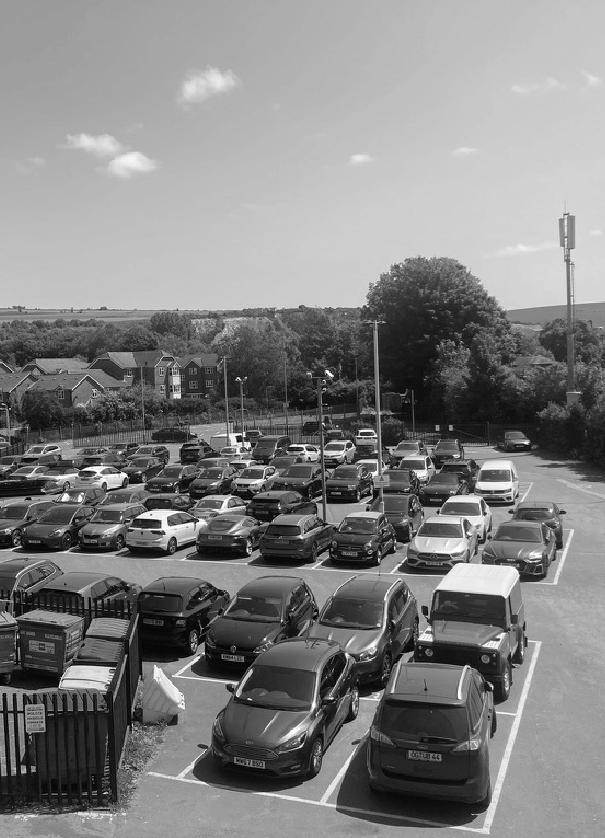
2 minute read
Moving Away from Neoliberal City Production
We could spatially identify where and how the city has been put to a use, a form, or a condition, to meet the interest of the market in production. Cities’ contribution to the economy is part of the reason for their own existence, but problems surge when aspects necessary for quality living disappear from the environment or become relegated at expense of those that prioritise economic production, with the devastating effect of an impoverished society and environment.
Chinchilla (2020) rightly points out that urban spaces are designed (physically and legally) for productivity: to facilitate delivery of goods, drive and park to work, advertise a business... but it becomes a more hostile place for those activities that are not linked to productivity: sleep, drinking water for free, breathing clear air, enjoy without paying are challenges in current urban environments.
Advertisement
In my view, the disfunction of the system is well illustrated in the widespread development tradition of disregarding the efficient use of land and other resources, through developments of low density detached and semi-detached housing, which lead to a sacrifice of everyone’s resources for the benefit of few. There are many further examples of poor decisions, which span from the unfortunate weight given to people (the final user) to private car ownership, strict infrastructure and building standards, poor municipal services and management, properties as financial assets… to the lack of meaningful consideration to climate change, affordable housing, communities, etc.
Chinchilla (2020) explains that current urban spaces have been made in a context in which the needs of a particular group of people have been prioritised and the rest are ignored. In the Lewes context, travellers/commuters have been prioritised, and especially those using cars as part of their transportation. The rest are almost absent from this environment: there is no housing, no workspaces, no play areas, etc. Regardless of use, the car park is a hostile space for most human-centred activities.
We design buildings and cities, but these design us too. Design has a crucial role in constructing future societies and strengthening the balances within, as people and place are not as separate as we may think in physical terms, but one is the result of another and they correlate constantly and continuously in time (Anne-Marie Willis, 2006). In this context, the designers’ mentality of today will be embodied in the places of tomorrow, thus constantly influencing future inhabitants and designers. It is our power now, to think on whether the space that we have before us is contributing towards the future society that we envisage and we want to shape. Re-balancing injustices with society and the environment should be, in my view, an inherent part of designing a new intervention in town today, for our benefit in the future. Therefore, it should break away from the urban elements that we consider to be out of date and not found in imagined future habitats.
‘There is an epidemic of poor health due to people living their lives indoors, sitting inside mechanically ventilated buildings with artificial light, transporting themselves everywhere in cars’
Quote, David Sim (Soft City):










